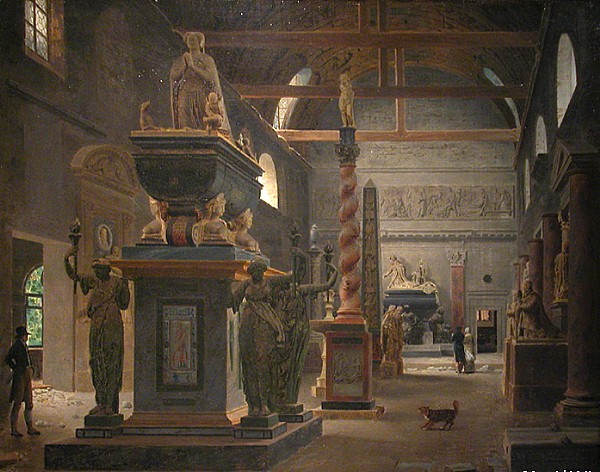"Pere" Callet
architect; b. March 10, 1755 (at Paris); d. about 1850.
He filled the office of commissaire voyer of the city of Paris from 1796 to 1828, and formed a remarkable collection of works on French architects and architecture. This included the famous series of the works of Jacques Androuet du Cerceau, which was sold to the city of Paris and destroyed with the Hôtel de Ville in 1871. He is best known by his Notice historique sur la vie artistique et les œuvres de quelques architectes français. His son, Félix Emmanuel Callet, assisted Victor Baltard in the construction of the Halles Centrales (Paris).
Benjamin Henry Latrobe
architect; b. 1762; d. September 20, 1820.
The son of the Rev. Benjamin Latrobe, superintendent of the Moravians in England. He entered the Stamp Office in London in 1783. He afterward studied architecture and built several residences in England. In 1796 he emigrated to Virginia and met President Washington. He was appointed engineer to the state of Virginia. He afterward went to Philadelphia, where he undertook the superintendence of the water supply. By letter of Thomas Jefferson, dated March 6, 1803, Latrobe was appointed surveyor of public buildings in Washington with the especial charge of the Capitol. He was directed to retain the main features of the design of Dr. Thornton, but nevertheless made very considerable changes. In 1806 his general conduct of the work was defended by Latrobe in a letter to members of Congress. Work on the Capitol was suspended in 1811, and on August 24, 1814, the building was burned by the British. February 15, 1815, Congress authorized President Madison to borrow $500,000 for the completion of the Capitol, and on April 20 of that year Latrobe was reappointed architect of the building. He resigned his position November 24, 1817. Between 1811 and 1815 he was interested in steamboat navigation at Pittsburgh. On his retirement in 1817 he went to Baltimore, and in 1820 to New Orleans.
1766
| |

Alexandre Lenoir, Musée des Antiquités et Monuments français (Paris: 1796).
The Musée des Antiquités et Monuments français appears to have inspired Schinkel's Museum of the Crimea and the Caucasian Provinces within the Palace at Orianda.
| |
|